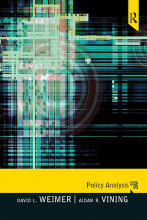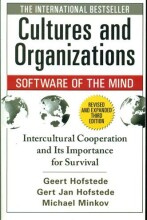Summary: Policy Analysis Concepts And Practice | 9781317345640 | David L Weimer, et al
- This + 400k other summaries
- A unique study and practice tool
- Never study anything twice again
- Get the grades you hope for
- 100% sure, 100% understanding
Read the summary and the most important questions on Policy Analysis Concepts and Practice | 9781317345640 | David L. Weimer; Aidan R. Vining
-
2 What is policy analysis?
This is a preview. There are 1 more flashcards available for chapter 2
Show more cards here -
2.1 Policy analysis in perspective
-
Policy knowledge is divided by two dimensions (content vs process and audience) into four activities, being:
- Policy research: focuses on relationships between variables that reflect social problems and other variables that can be manipulated by social policy (primary focus on the 'what' and audience is the community of researchers).
- Policy process research: its frameworks and theories explains why and how the content of public policy changes or remains the same (primary focus on the how of policy making and audience consists largely of academics).
- Stakeholder analysis: advice about strategy (primary focus on the 'how' for a specific client).
- Policy analysis: focus on the 'what' of policy for a specific client.
- Policy research: focuses on relationships between variables that reflect social problems and other variables that can be manipulated by social policy (primary focus on the 'what' and audience is the community of researchers).
-
2.3 A closer look at analytical functions
-
Four major functions performed by ASPE analysts (a DHHS office):
- Analysts perform a 'desk officier' function that involves coordinating policy relevant to specific program areas and serving as a contact for the line agencies within DHHS that have responsibilities in these areas.
- Analysts perform a policy development function.
- Analysts performs a policy research and oversight function.
- Analysts perform a 'firefighting' function (urgent tasks).
- Analysts perform a 'desk officier' function that involves coordinating policy relevant to specific program areas and serving as a contact for the line agencies within DHHS that have responsibilities in these areas.
-
2.4 Basic preparation for policy analysis
-
In order to integrate effectively the art and craft of policy analysis, preparation in five areas is essential. These are:
- Analysts must know how to gather, organize and communicate information in situation in which deadlines are strict and access to relevant people is limited.
- Analysts need a perspective for putting perceived social problems in context.
- Analysts need technical skills to enable them to predict better and to assess more confidently the consequences of alternative policies.
- Analysts must have an understanding of political and organizational behavior in order to predict, and perhaps influence, the feasibility of adoption and the successful implementation of policies.
- Analysts should have an ethical framework that explicitly takes account of their relationships to clients.
- Analysts must know how to gather, organize and communicate information in situation in which deadlines are strict and access to relevant people is limited.
-
4 Efficiency and the idealized competitive model
-
4.1 The efficiency benchmark: the competitive economy
-
When deriving someone's utility function, we make two basic assumptions, namely:
- The more of any good a person has, the greater that person's utility.
- Additional units of the same good giver ever-smaller increase in utility; in other words, they result in declining marginal utility.
- The more of any good a person has, the greater that person's utility.
-
Economists refer to a distribution as Pareto efficient as:
A set of prices that distributes factor inputs to firms and goods to persons in such a way that it would not be possible for anyone to find a reallocation that would make at least one person better off without making at least one person worse off. -
4.2.1 Consumer surplus: demand schedules as marginal valuations
-
A marginal valuation schedule indicates:
How much successive units of a good are valued by consumers in a market. -
The compensating variation of a price change is:
The amount by which the consumer's budget would have to be changed so that he or she would have the same utility after a price change as before, which serves as a money metric. -
4.3 Caveats: models and reality
-
Three limitations involved in the general equilibrium model are:
- The general equilibrium model is static rather than dynamic
- The general equilibrium model can never be complete and include all goods and services
- The assumptions of the general equilibrium model are often violated in the real world.
- The general equilibrium model is static rather than dynamic
-
5 Rationales for public policy: market failures
-
5.1 Public goods
-
We consider any good that is not purely private to be a public good. Two primary characteristics define private goods:
- Rivalrous consumption: what one person consumes cannot be consumed by another.
- Excludable ownership: one has control over use of the good.
- Rivalrous consumption: what one person consumes cannot be consumed by another.
-
5.1.1 Excludability and property rights
-
Excludability implies that some individual can exclude others from use of the good. In most public policy contexts in developed democracies, power to exclude others from use of a good is dependent on property rights, these are:
Relationships among people concerning the use of things.
- Higher grades + faster learning
- Never study anything twice
- 100% sure, 100% understanding
Topics related to Summary: Policy Analysis Concepts And Practice
-
Rationales for public policy: market failures - Natural monopoly
-
Rationales for public policy: market failures - Information asymmetry
-
Rationales for public policy: other limitations of the competitive framework
-
Rationales for public policy: distributional and other goals
-
Limits to public intervention: government failures
-
Correcting market and government failures: generic policies
-
Adoption - Political strategies with arenas
-
Government provision: drawing organizational boundaries
-
Landing on your feet: organizing your policy analysis
-
Cost-benefit analysis: assessing efficiency

































